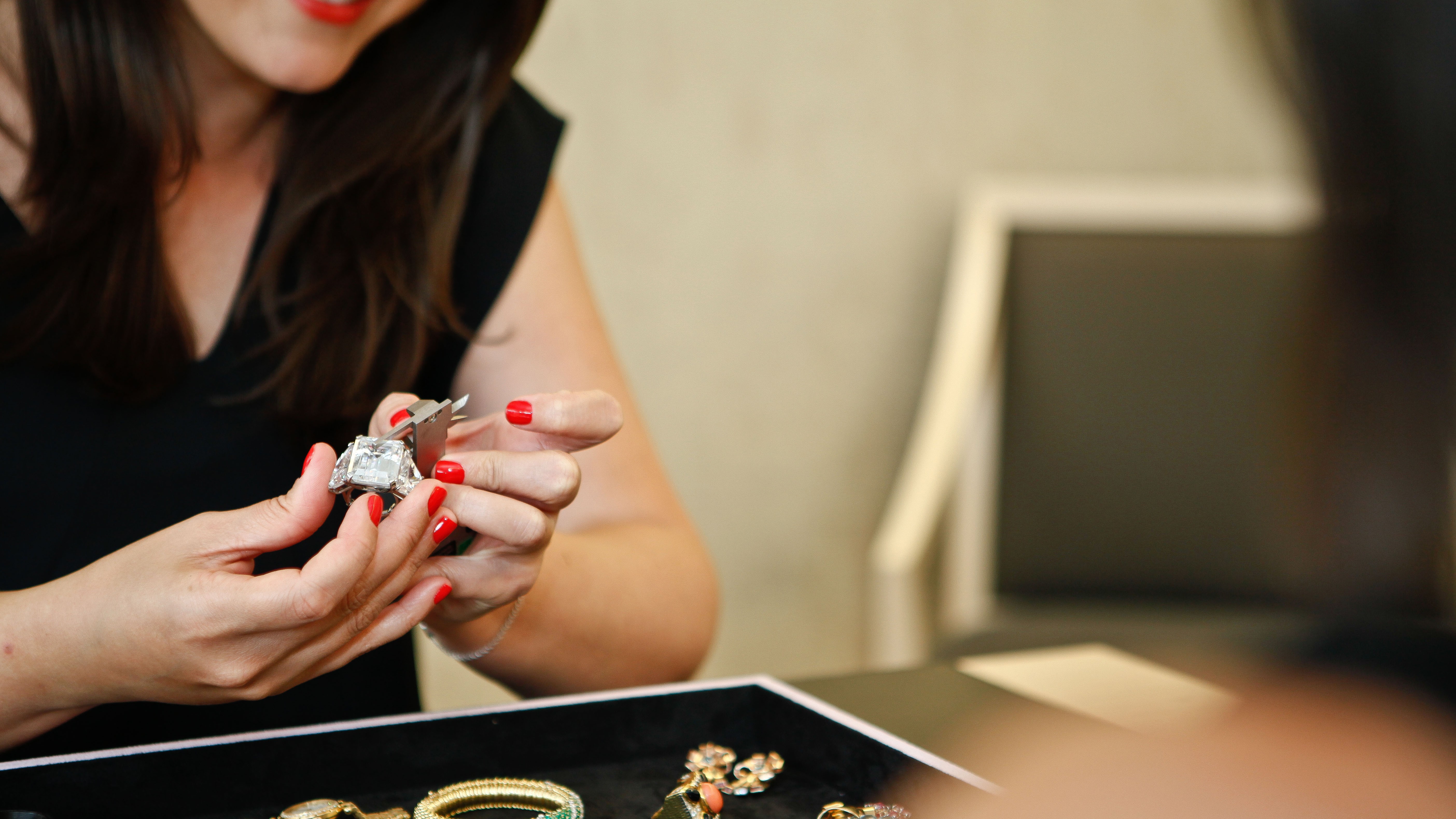What is a GIA
Diamond Grading Report?

What is a GIA Diamond Grading Report?
There’s much more to a diamond than meets the eye. If you look at these brilliant gemstones, you may observe that diamonds come in many different shapes, such as emeralds and pears, many different colors, including candy apple red and bubblegum pink, as well as different carat sizes. But there are other important diamond characteristics that you may not be aware of because they are less apparent to the naked eye, like fluorescence and symmetry, but are all equally important to the value of a diamond.
If you want to know how much your diamond is worth, it is important to understand the fundamental characteristics of a diamond and all the different ways they can be graded - and there is no better diamond authority than the Gemological Institute of America (GIA). If you have ever purchased a diamond, or are looking to sell one, chances are you have heard this name. But what is the GIA, how does it relate to your diamond, and why is it important when determining the value of your stone?
What is the GIA?
The Gemological Institute of America (GIA) is an educational institution and the foremost authority of gem research and diamond grading. There are many diamond grading labs across the world, but the GIA is unanimously recognized as the industry leader. Their laboratories span almost every continent, including North America, Europe, Asia, and Africa. According to GIA’s website, “the Institute developed the International Diamond Grading System and the 4C’s of diamond quality,” which are used and recognized by industry professionals around the world.
GIA’s Graduate Gemologists meticulously examine each submitted diamond for its unique characteristics, including color, carat, clarity cut, and more. After a thorough and precise examination using an industry standard 10x microscope, the GIA issues an objective and unbiased Diamond Grading Report for each diamond.
What is a GIA-Certified Diamond?
Many people believe that the GIA issues certificates for the diamonds they’ve graded. Even the trade refers to this paperwork as certificates. It’s a common mistake. The GIA actually produces a Diamond Grading Report upon completion of their examination. There is no mention of the word, ‘certificate’ or ‘certified’ anywhere on the report. That said, when we hear of a “GIA certificate” or “certified diamonds,” this is what they are referring to. A GIA Diamond Grading Report typically includes:
- GIA Report Number
- Shape and Cutting Style (For example, Emerald Cut, or Round Brilliant Cut)
- Measurements (the length, width, and depth of the stone in millimeters)
- Carat Weight
- Color Grade
- Clarity Grade
- Cut
- Polish
- Symmetry
- Fluorescence
- Plotted Diagram of any inclusions or blemishes (For example, feathers, crystals, or chips)
- Indications of treatments, such as HPHT or laser drills
- Laser Inscriptions (if any)
GIA Diamond Grading Reports can take up to several weeks to complete. Their cost is based on carat weight and can range anywhere from $50 to thousands of dollars due to the extensive and intensive nature of identifying and grading diamonds and colored gems.

How a GIA Diamond Grading Report Affects Value
Diamonds with GIA Diamond Grading Reports are not necessarily more valuable than diamonds without them. A diamond’s value will come from the diamond’s immutable characteristics – and of course the supply and demand of those attributes at a given time. What is truly valuable to anyone who owns a diamond is the knowledge of the characteristics of their stone, and how important those qualities are. No jewelry appraisal or diamond grading lab has more rigorous standards or international authority than the GIA. A Diamond Grading Report can leave the guesswork off the table, which is important when you want to achieve the highest possible price.
It’s important to note that two different diamonds with similar GIA Diamond Grading Reports can look quite different in person. As an example, two Round Brilliant Cut diamonds may both weigh the same, and have identical color and clarity grades. On paper they are very similar. However, one diamond may have a “Good” Cut Grade, and the other might have a “Very Good” Cut Grade. This difference, though small at first glance, could really impact the price you might receive when selling your diamond.
Receive the Best Value for Your Diamond

CIRCA buys diamonds of all shapes and sizes because we have the customers. Whether you are selling a single diamond engagement ring or a collection of diamond jewelry, CIRCA will make our best offers for the diamonds that no longer bring you joy. Once you accept our offer, you will receive immediate payment. If you have a diamond you wish to sell, schedule an appointment at one of our 20 office locations worldwide. At CIRCA, your diamonds are Worth More.